For modern goalies, saves are just one part of the 'position of perfection'
Adam Francilia, an exercise physiologist for NHL players, has long believed goaltending is, at its very core, similar to a martial art like jiu-jitsu or judo.
Both the hockey goalie and martial artist begin in a static stance, he explains, then read and react to whatever unfolds in front of them. Both operate in a confined space - the crease or the mat. Both need to be flexible and nimble. Both must find a mental sweet spot, no matter the environment.
"You're putting on this special gear, and you're entering this other self. It's very Zen," Francilia said of goaltending. "In a sense, you play a different sport than the skaters on your team and the other team, yet you're on the ice at the same time. You have very difficult responsibilities, a very different oneness with the game than skaters. And it's a position of perfection - especially these days."
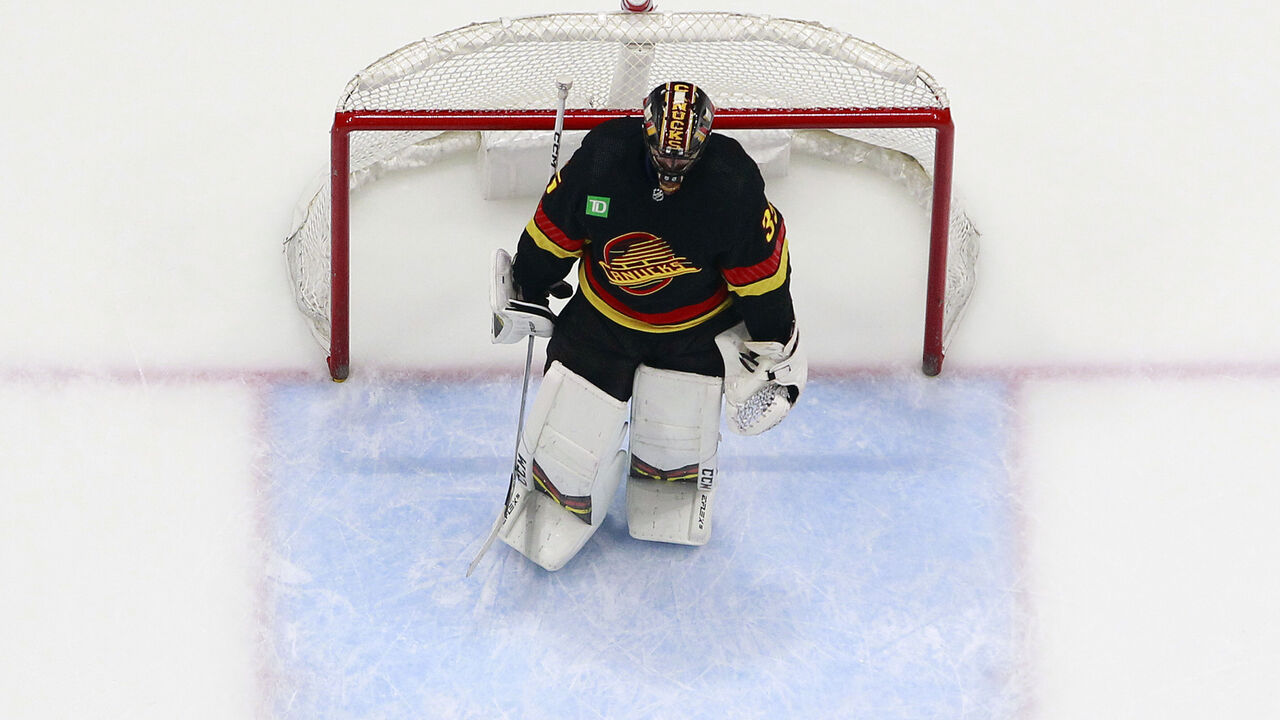
Francilia, currently working with 11 NHL goalies, most notably starters Connor Hellebuyck and Thatcher Demko, emphasizes the plight of the modern goalie for two main reasons. One, making saves is extremely hard in today's offense-first environment. Two, staying healthy is also challenging, with the most effective save-making techniques inflicting a heavy toll on the body.
As the 2022-23 regular season comes to a close and goalies switch into either offseason recovery mode or a deeper Zen mindset for the playoffs, let's unpack Francilia's second point. What exactly is the deal with this save-making conundrum facing today's goalies? And how can they counteract it?
The conundrum
All modern goalies rely on some variation of the butterfly technique, popularized by Hall of Famer Patrick Roy in the late 1980s. The up-and-down style helped elevate save percentages in the '90s, but an increased injury rate followed. In 2009, Sports Illustrated declared hip injuries an epidemic in a seminal article chronicling the struggles of goalies who grew up imitating Roy.
A few years later, Jonathan Quick of the Los Angeles Kings popularized the RVH, a goal-post-integration technique used by nearly every current NHL netminder. Short for reverse vertical horizontal, the RVH involves the goalie leaning toward the post with his short-side pad tilted horizontally and far-side pad vertical. The RVH wards off offense from below the hash marks, and, like the butterfly, misuse and overuse can agitate ankles, knees, groins, and hips.
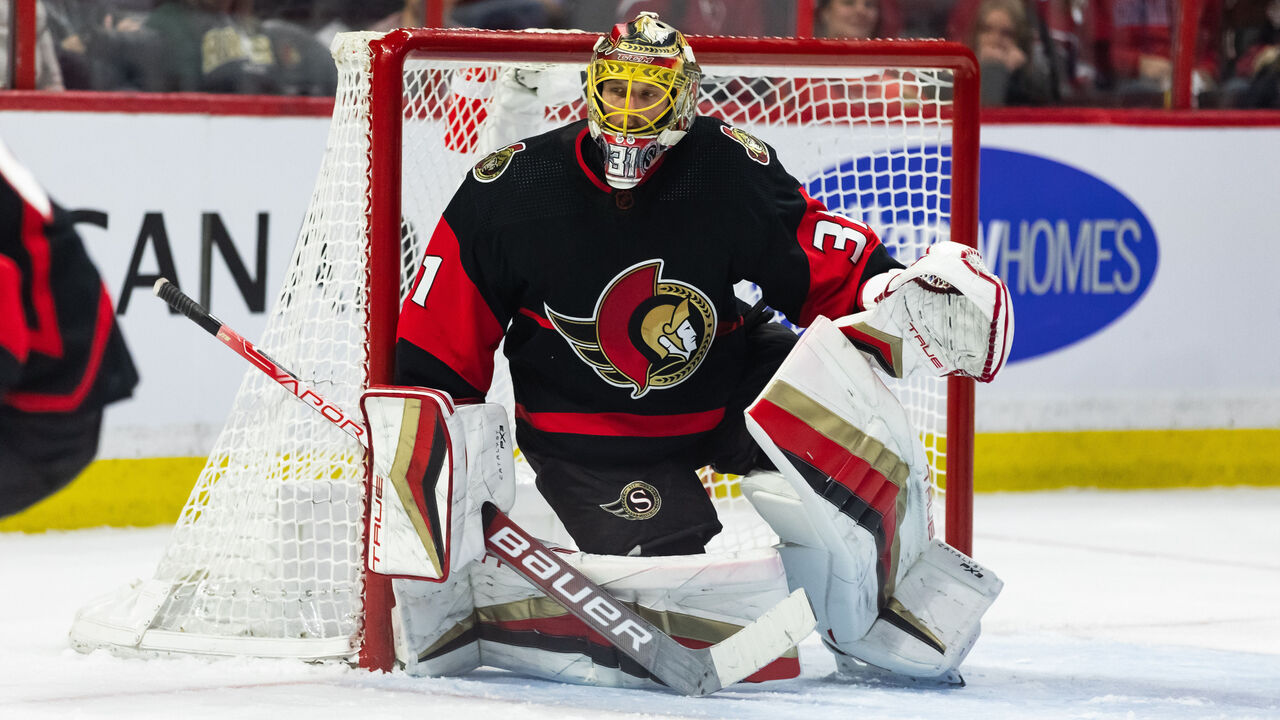
"You look at the butterfly, and you go, 'Oh, that's not ideal,'" said Maria Mountain, an exercise physiologist in London, Ontario, who works closely with goalies of all ages and skill levels through her online training programs.
"And then you look at the RVH," she added, "and it's like, 'Oh my God …'"
The RVH, Francilia noted, is "more of a culprit" than the butterfly in contributing to injuries. It's a completely unnatural shape and movement for a human being to execute, with the ankle and knee exploding toward a steel beam to hold an awkward posture. This puts tremendous torsion on the joints.
"If the joint that's directly and most locally involved with the movement has a lack of mobility, if it isn't doing its job properly, the joints above or below have to pick up that slack," Francilia explained of, for example, a mobile right knee compensating for an immobile right ankle. All of that kinetic energy must travel somewhere.
In other words, the only tried and true way to consistently stop pucks in 2023 sends goalies down a path that frequently ends with a trip to the surgeon's table and months of rehab. While forwards and defensemen are by no means immune to joint overuse injuries - our ancestors weren't skaters, after all - suffering a major hip injury has almost become a rite of passage for goalies.

Six NHL-caliber netminders - Robin Lehner, Laurent Brossoit, Joonas Korpisalo, Anton Khudobin, Jonathan Bernier, and Daniil Tarasov - underwent hip surgery in 2022 alone, according to reports. Others, including Elvis Merzlikins and Tristan Jarry, missed time this season because of hip issues, and it's safe to assume at least a few of the vaguely labeled "lower-body" injuries were, in fact, hip-related. Prospect Ian Scott, a 2017 Toronto Maple Leafs draftee who had hip surgery in 2019, retired last July at 23 after failing to return to "full playable health."
"Everyone gets it now," Buffalo Sabres goalie Eric Comrie said recently before pointing out he and teammates Craig Anderson, 41, and Ukko-Pekka Luukkonen, 24, have all gone under the knife to repair at least one ruined hip.
"I had no choice. I couldn't prolong it. I had to stop playing. It was a lot of pain," Comrie, 27, said of undergoing double hip surgery in 2013, his NHL draft year.
Linus Ullmark, the front-runner to win the Vezina Trophy this season, also opted to get both hips fixed prior to making the jump to the NHL. In recalling the thought process behind choosing double over single, the Boston Bruins goalie said: "Let's do both of them at the same time and be done with it."
Comrie and Ullmark sounded like baseball pitchers fresh off Tommy John surgery, a procedure that not only repairs wonky elbow ligaments but can also provide performance benefits. Both goalies reported increased mobility, flexibility, and strength. "It helped at the time, and it's helped in the long run," Comrie said.
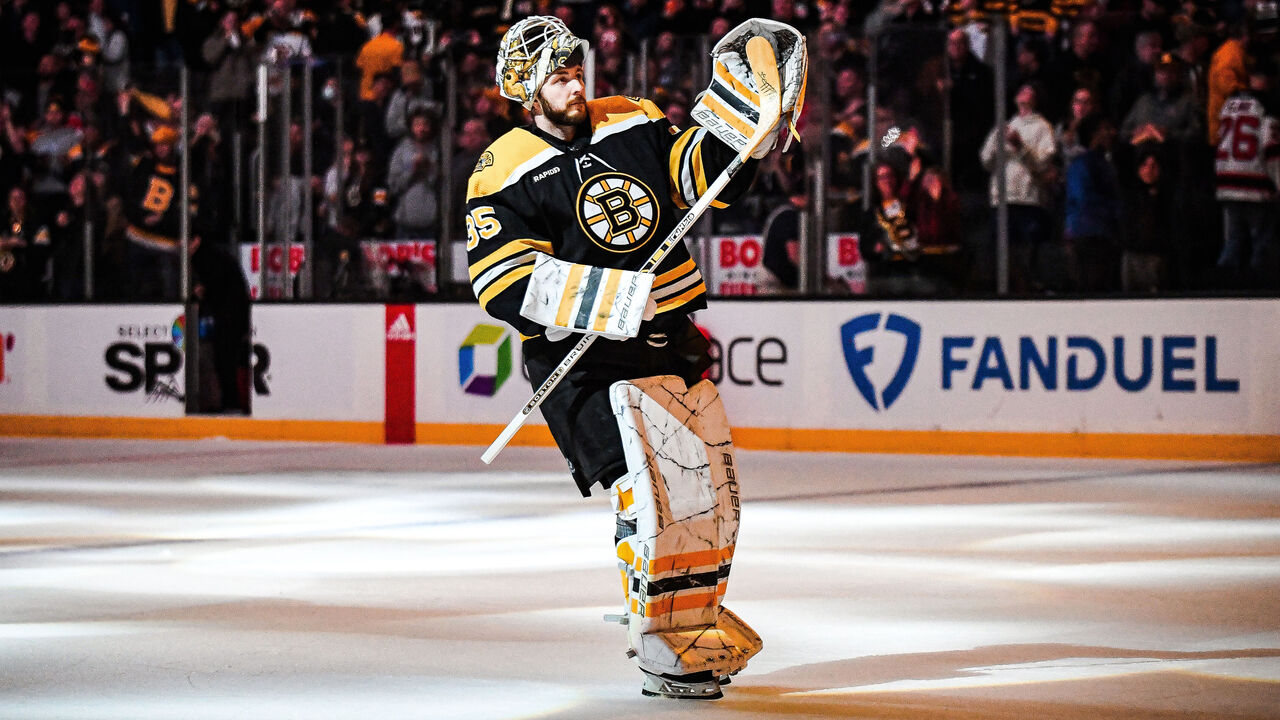
Anatomy plays a considerable role in goalie health. Some, including Ullmark, develop femoroacetabular impingement, or FAI, a condition in which wear and tear causes the head of the femur to sit and move improperly within the socket of the pelvis. Others are blessed with a hip structure capable of absorbing the butterfly and RVH, ultimately delaying wear and tear.
"It seems to be genetics, a lot of it, with how shallow or how deep your hips are. So I've been really lucky," Washington Capitals starter Darcy Kuemper said prior to the season. "Knock on wood here and hope that continues."
"So far, thank God I didn't have any major issues," said Andrei Vasilevskiy, the Tampa Bay Lightning superstar known for his freakish flexibility.
The counteraction
Born in 1999, Capitals prospect Clay Stevenson has lived his entire life in the butterfly era. He first dropped to his knees at the ripe age of six, and he added the RVH to his repertoire at about 16 while playing midget in British Columbia.
The late bloomer signed with the Capitals as an undrafted free agent last spring following an excellent season at Dartmouth College. Stevenson, a 24-year-old rookie pro, has posted strong numbers in 38 games between Washington's AHL and ECHL affiliates. His development arrow is pointing up.
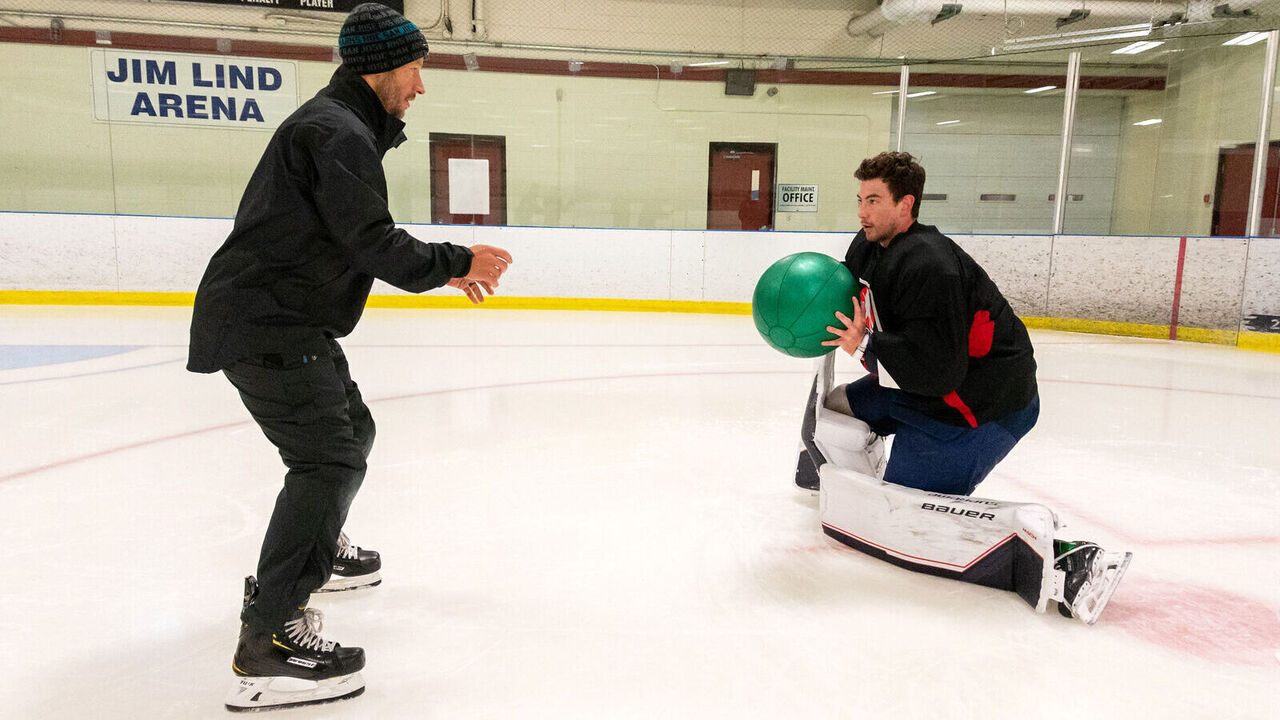
Above all else, Stevenson must stay healthy - and he's tapped Francilia to help. "The pro season is so taxing on your body, so you have to find ways to combat that," the netminder said. "I'm learning how to stack my body right."
Francilia, who originally trained athletes from a variety of sports, including powerlifting, football, gymnastics, and equestrian, zeroed in on goaltending as his niche about a decade ago. His sweeping objective: To optimize how goalies move physiologically in and out of various save techniques - or "stacks."
"As soon as a muscle turns off and you're in any sort of shape, compression, or bend, the load goes through the connective tissue. That's not good. If the muscles are on the tissues don't have to work as hard," Francilia said.
The longtime trainer, based in B.C.'s Okanagan Valley, interacts with his clients often during the season, calling, texting, or meeting in person. Most crucially, Francilia produces a weekly video featuring narrated clips of good and bad in-game postures and stances. A polished foundation is crucial.
The hope is that smooth biomechanics equal fewer injuries and more saves.
"One of my favorite terms is that I'm giving myself 'the most access to pucks,'" Stevenson said. "If I'm stacked the right way and making saves with clean mechanics, there's a performance benefit. You're giving yourself optimal percentages to make that second save or third save - whatever you need."
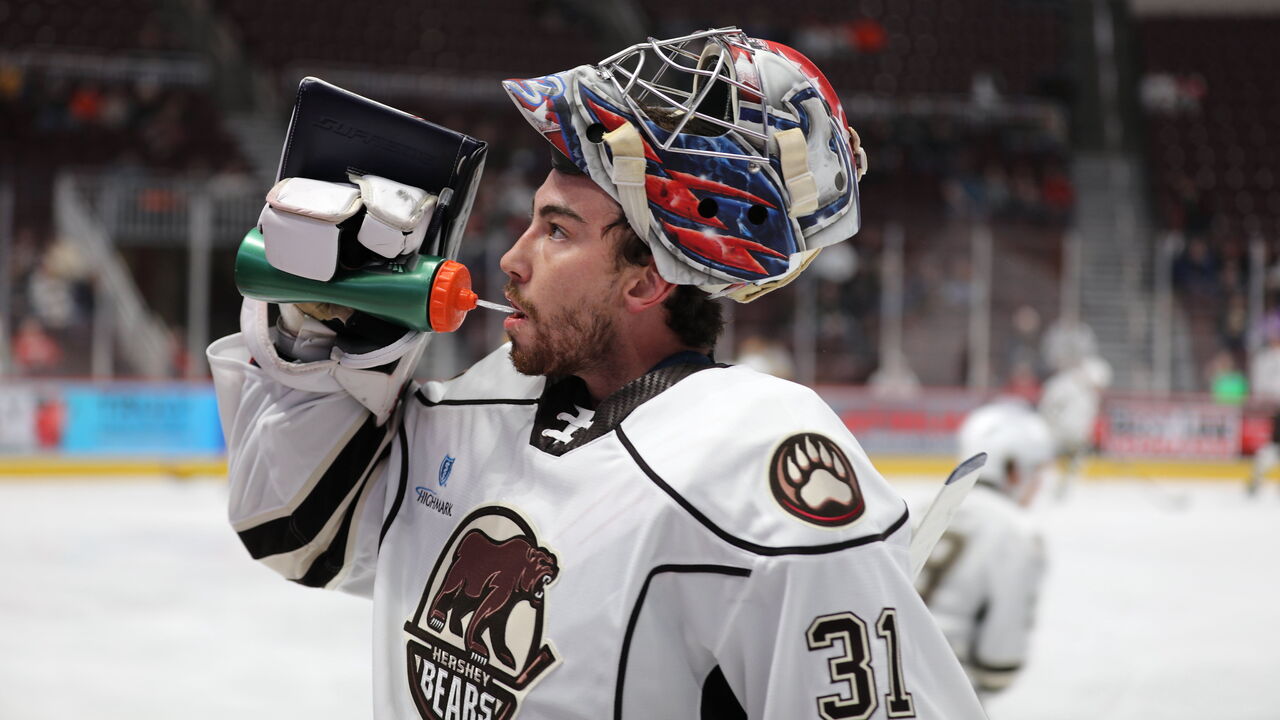
Francilia also wants his clients to hone a Zen-like mentality when it comes to maintenance. Devise a plan and trust the process. On game days, Stevenson starts by placing a heating pad on his groins, hips, hamstrings, and lower back. He then dives into active stretching to wake up specific muscles and tissues - leg raises, hip bridges, forward-facing wall squats, side lunges, and A-skips, to name a handful. The full warmup takes approximately an hour.
Postgame, Stevenson stretches and rolls out specific areas to "unpretzel" his body as much as possible. He then hits the cold tub to recover further.
On top of those routines, the former Ivy Leaguer loosens up before bed four-to-five nights a week through full-body stretching sessions. Occasionally, a team trainer provides treatment on his lower back, ankles, glutes, groins, or hips.
"My first job," Mountain said of her approach, "is to keep the goalie healthy. The second is to help them perform better. So I'm mostly selling them on the performance side, yet in reality, giving them the injury prevention side too."
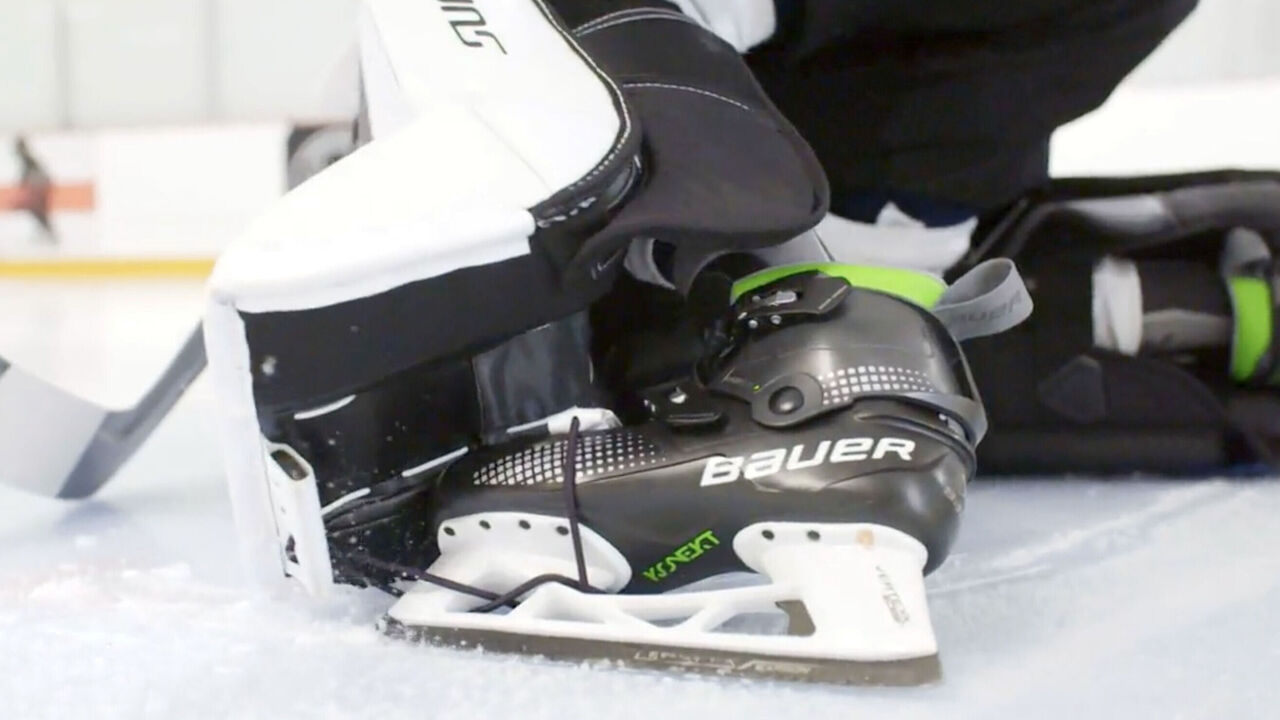
Kevin Woodley, who reports on goaltending trends for NHL.com and InGoal Magazine, has noticed modern goalies are better than previous generations at trying to find the "happy medium" between elite performance and longevity.
For instance, many goalies have experimented with a "shin lock" variation of the RVH, which is more forgiving on the body. Goalies are also welcoming with open arms the new Bauer Konekt skate, which offers additional ankle mobility and flexion and, thus, in theory, less stressful butterflies and RVHs.
"If your ankle is locked in, where does the energy go? It goes up the chain to the knees, then the hips," Woodley said. "What this Bauer skate has done is it's allowed the ankle and the lower shin to absorb some of that energy."
Francilia would love to see other equipment changes to help prolong careers.
The knee stack on the inside of the pads - or pad riser as it's called in the NHL rulebook - can't exceed 2.5 inches in thickness when uncompressed. Permitting an extra inch or two, Francilia said, "would alter, in a healthy manner, the angle of the knee joint to the ankle joint. It would take a lot of torsion off the goalie's lower leg, which is a significant factor in the increase in ankle, knee, groin, and hip injuries."
Meanwhile, despite the RVH's increasing popularity, goalie pants have lost some circumference. "In order to seal the post, the angle required from the knee joint to the hip joint is so extreme that it's creating a lot of soft tissue tension," Francilia said. "When the pants had a little more flare to them, the goalie was able to perform the same task but maintain a much healthier physiological shape."
"The sport's blurring the line between goal-scoring and the health, safety, and wellness of goalies," he said, summarizing his concerns. "It's not good enough. I strongly feel like this needs to be addressed for the sport to move forward."
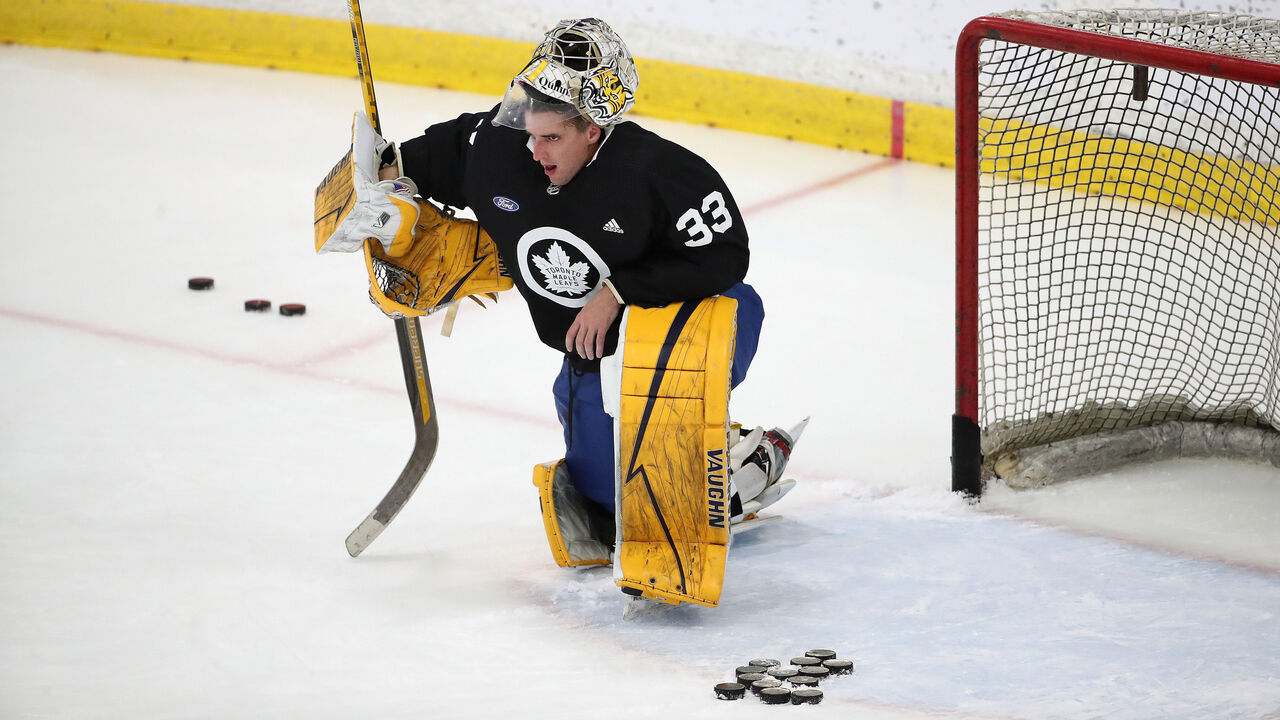
As for workload, Francilia dreams of a friendlier future. Starters play fewer games in 2023 versus 2003, which counts as progress. However, the typical practice still caters to shooters, resulting in untold butterfly and RVH drops.
Well, what if hockey treated goalies the same way baseball treats pitchers?
"In MLB, everything is about pitch count. And not just total pitch count but how many curveballs, how many off-speed pitches, how many knuckleballs, and how many heaters are you throwing in a single session?" Francilia said. "This is where we have to do a way better job with goalies. We need to start emphasizing a qualitative approach versus a quantitative approach."
In the current climate, as Mountain knows well as a trainer of goalies competing in beer leagues, the pros, and everything in between, the position's physical drawbacks are severe though not wholly unique. To make saves, a goalie must pay the price. In a strange way, it's the cost of doing business.
"If you look at any sport, really, it's not good for your body," Mountain said. "You look at football: It's not good to get smashed into by another 200-pound human being. Baseball pitchers: Not good for your shoulder to rip a baseball. Rowing: Not good for your back. You decide as an individual - 'Well, this is how I'd like to spend my body currency' - and that's it. That's the cost."
John Matisz is theScore's senior NHL writer. Follow John on Twitter (@MatiszJohn) or contact him via email ([email protected]).
HEADLINES
- Flyers' Zegras: Feels 'f---ing amazing' to score twice, beat Ducks
- Sorokin breaks Islanders' all-time shutouts record in 9-0 win over Devils
- Kucherov powers Bolts past Avs with 7th straight multi-point game
- Jets' Fleury alert, moving extremities after leaving ice on stretcher
- Flyers GM Briere prioritizing future over short-term playoff push